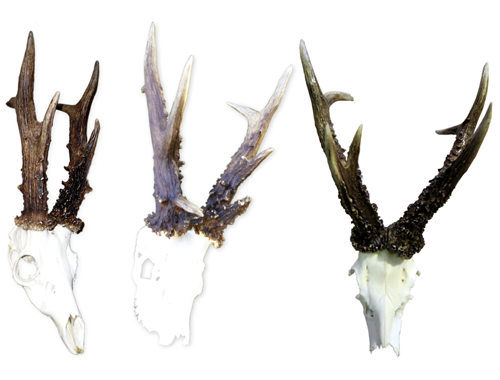2012 English and Welsh roe review

2012 English and Welsh roe review.
The announcement that 2012 was the second-wettest year in England since records began confirmed what many stalkers already suspected.
Their suspicion that, as a result of such a wet summer, many roe kids would succumb in early life is now being borne out by the number of does seen with only one accompanying kid.
This will become more apparent once the spring arrives and feed improves.
What is certain is that the cancellation of both the Scottish Game Fair in Perth at the end of June and The CLA Game Fair at Belvoir Castle in July meant that Royal Mail benefitted from the increased carriage of heads to trophy judges for measurement.
Despite these problems, this year the CIC Trophy Commission exceeded the previous number of heads measured, with 597 heads of all species achieving medal category, from a total of just less than 800 heads presented.
Roe quality has returned this year after a slight drop in 2011, with 53 gold medals, 68 silver and 73 bronze.
The shift in proportion of golds — from 22% to 27% — is significant, not only in the base proportion returning to levels seen in previous years, but more importantly in the quality of the heads that lead the list, with nine exceeding 150 CIC points.
272 English and Welsh roe heads were presented for assessment, with 194 achieving medal status (regrettably, none of those from Wales).
Four counties stand out for the quality of their heads: Wiltshire produced 49 heads, of which 15 were gold medals; Somerset produced 29 heads, of which seven were gold; Hampshire produced 28 heads, of which five were gold; and Dorset produced 21 heads, of which six were gold.
Of particular note were Lee Mulcock’s well-formed Wiltshire head at 187 CIC points, and from Dorset, S. Cawley’s 181.78 CICpoint head.
Another four heads measured more than last year’s top score, with J. Lee’s 173.73 CIC point Dorset head, Simon Fry’s wide Somerset head at 172.4 points, and both Nigel Dewing’s Berkshire head and M. Cohen’s Hampshire head achieving more than 160 CIC points.
Also of note were Ian Workman’s three heads numbering 30 tines between them, the best making 131 CIC points.
The question as to what weight makes a medal is well demonstrated this year, with the average net weights for gold being 510g, silver 440g and bronze 390g.
Yorkshire stood out for the proportion of gold medal heads submitted: five out of 10, but yet again the heads presented from Sussex and Oxfordshire failed to meet expectations, as did those from Gloucestershire.
Cornwall produced its first gold medal head since records began.
It is always a pleasure to see traditional hunting habits being maintained.
A recent invitation by Joan Giles of Pertwood Manor estate, in Wiltshire, to measure “a few heads” revealed 40 carefully selected roe heads in the shoot room, of which 10 proved to be of medal quality.
What was evident from this collection was the care and time taken over the years by the stalker Tony Jeapes actively to manage the deer on the estate.
I am often asked about how the BASC system of measuring compares with the CIC system.
I confess not to be an expert on what BASC offers, but there can be no real comparison between the two.
The CIC is an international organisation and in 2014 its measuring system will have been in use across the world for 70 years.
It allows hunters to make comparisons within species across the animal’s entire range.
Its measurers are internationally accredited and are subject to rigorous training and assessment, the certification of which is controlled by the CIC head office in Budapest.
The rules by which measuring takes place are enshrined in the CIC’s Red and Blue Books.
Measurements made by the CIC are recorded and, where relevant, are subject to international scrutiny.
In summary, a CIC measurement is carried out by CIC authorised trophy judges in accordance with published rules; any other offering cannot be so and does not, therefore, bear any comparison.
In 2013, members of the team will be in attendance at the Scottish Game Fair at Scone Palace, in Perthshire (57 July); at The CLA Game Fair at Ragley Hall, Warwickshire (1921 July); at the Moy Field Sports Fair, in the Highlands (23 August); and at the Midland Game Fair at Weston Park, in Shropshire (1415 September).
We also hope to be present at a new venture in the Scottish Borders in March.
We are delighted with the contributions made by the two new members of our team: Gary Tatterton from West Yorkshire and Chris Rogers from Suffolk.
Their enthusiasm and expertise have been put to good use this year and we welcome the additional reach provided to the North and East of England.
Right-click or drag & drop the table onto your desktop to view larger version.











